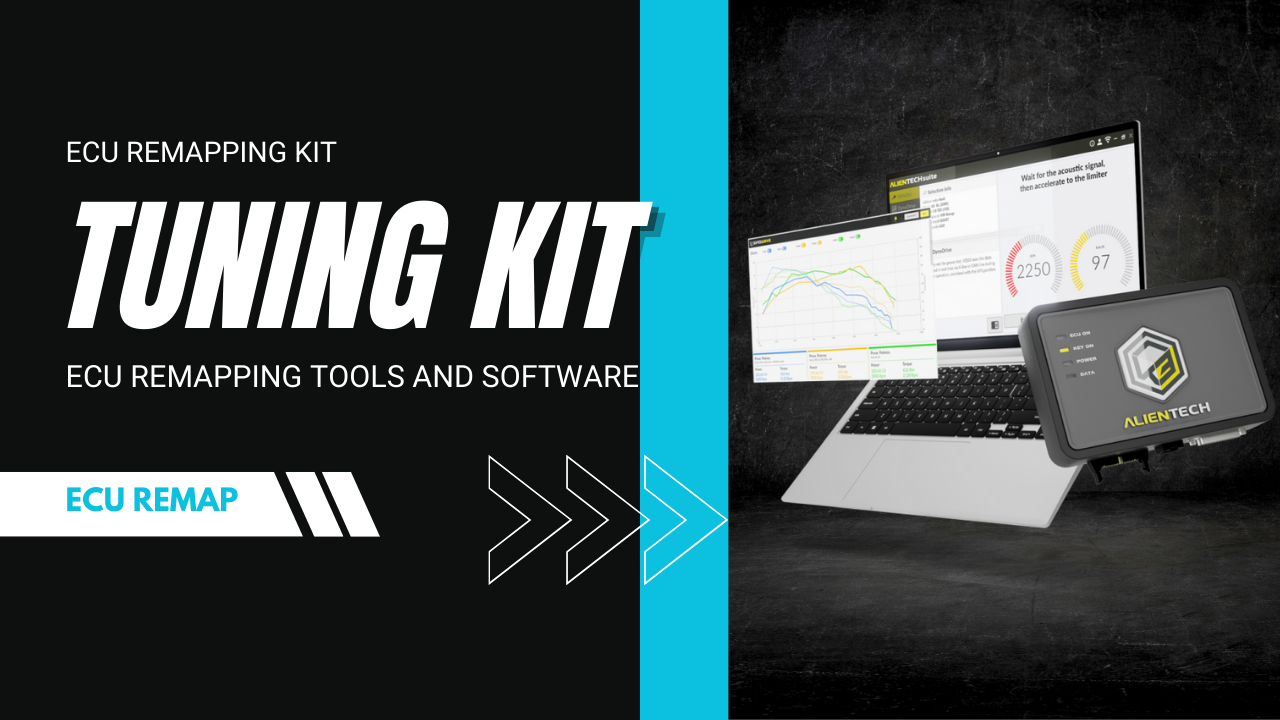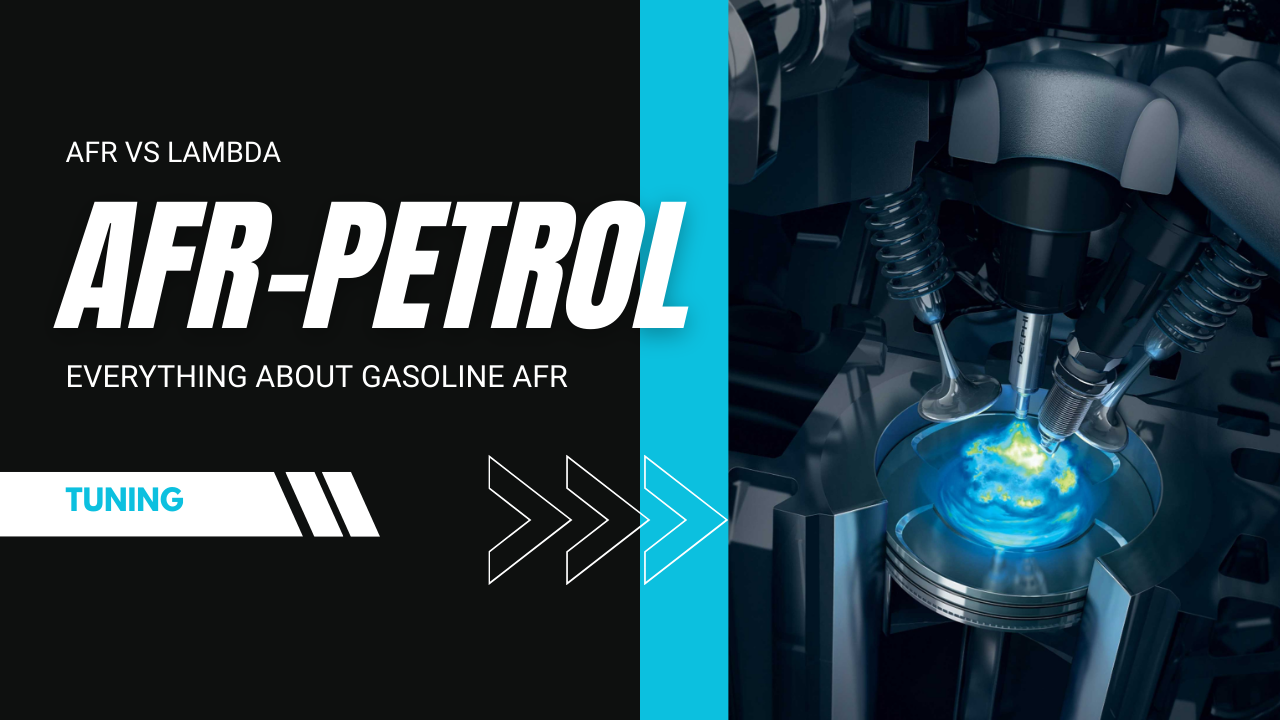
Custom ECU Tuning File Service & Remap | Performance & Safety
Custom made ECU Tuning File: A Complete Guide
The ECU (Engine Control Unit) is the brain of the engine, managing processes such as fuel injection, ignition timing, turbo boost control, and dozens of other parameters. ECU tuning means modifying the internal software maps to improve performance, increase power, or reduce fuel consumption.
This tuning can be done in two ways:
- Using an off-the-shelf (OTS) map
- Creating a custom ECU tuning file
This article explains the difference between the two, the benefits of custom tuning, and the exact process required to build and validate a custom ECU file.
Off-the-shelf Map vs. Custom Chiptuning file
- Off-the-shelf map (OTS):
- A generic file designed for a certain model of car and applied without modification.
- Pros: quick, affordable, simple.
- Cons: does not consider the unique condition of each vehicle (mileage, hardware upgrades, local fuel quality).
- Custom ECU tuning file:
- A tailored file written specifically for your car, your hardware, your goals, and your environment.
- Pros: maximum performance with safety.
- Cons: more expensive, time-consuming, requires tools and expertise.
The Process of Custom ECU Tuning File Service
1️⃣ Preparation and Goal Setting
- Identify ECU type (Bosch, Delphi, Siemens, Marelli, etc.).
- Assess hardware: turbo, intercooler, injectors, exhaust system, etc.
- Define tuning goal:
- Stage 1 → safe power increase with stock hardware.
- Stage 2 → requires supporting modifications (exhaust, intercooler, intake).
- Stage 3+ → major upgrades (bigger turbo, injectors, internal engine changes).
-
2️⃣ Reading the Original ECU File
- Use tools such as KESS, KTAG, Autotuner, CMD, MPPS.
- Save a backup of the stock file in case you need to restore it.
3️⃣ File Analysis
- Open the file in professional software: WinOLS, ECM Titanium, StageX.
- Identify the critical maps:
- Fuel injection maps
- Ignition timing maps
- Boost pressure maps
- Torque limiters
- AFR and Lambda maps
- EGR, DPF, catalyst controls
4️⃣ Editing and Creating the Custom Map
- Adjust maps based on the tuning stage and goals.
- Maintain safety margins to avoid detonation (knock), excessive exhaust temperatures, or lean/rich conditions.
- Ensure smooth transitions and proper calibration between related maps.
5️⃣ Flashing the ECU
- Write the modified file back to the ECU using the same tools.
- Always use a stable power supply to prevent ECU bricking during the flash.
6️⃣ Initial Testing and Data Logging
After flashing, critical parameters must be logged and monitored:
- AFR (Air/Fuel Ratio)
- Boost pressure
- Ignition timing / Knock retard
- EGT (Exhaust Gas Temperature)
- MAF/MAP sensor values
- Fuel trims & injector duty cycle
Data Logging with Aftermarket Parts (Enhanced with Scientific Data)
Custom tuning becomes even more powerful when aftermarket parts are added. These modifications change airflow, temperatures, and pressure, which show up clearly in data logs. By comparing before-and-after logs, the tuner can make precise and safe adjustments. The following examples are drawn from actual studies, experiments, and engineering measurements.
Example 1: Larger or More Efficient Intercooler
- In a study "Optimisation of Engine Cooling for Knock Suppression" (H. Harishchandra et al.), improving charge-air cooling (i.e. using a more efficient intercooler) led to reduction in charge-air temperature and allowed an ignition timing advance of approximately 6-8° crank angle (CA) under increased load without knock.
- The same paper reports that reduction in cylinder/head temperature by ~9 Kelvin at critical combustion chamber areas helps knock suppression.
- Another (EngineBasics “Front Mount Intercooler Efficiency Test Data”) measured specific inlet vs outlet temperatures under similar airflow and boost: typical drops of ~15-20 °C are possible with a high-efficiency intercooler depending on boost pressure, ambient temp, etc.
Illustrative realistic numbers (for a turbocharged gasoline engine at ~1.2 bar boost, 25 °C ambient):
- Stock intercooler outlet air temperature (IAT): ~ 55-60 °C under steady wide open throttle (WOT) at 4000-5000 rpm.
- High-efficiency front-mount intercooler: outlet IAT ~ 40-45 °C under same conditions. That’s a drop of ~12-20 °C.
- With this ~15 °C drop, ignition timing advance of ~5-7° CA is often safely achievable (depending on fuel octane and cylinder pressure), yielding appreciable torque gain in mid and upper RPM range.
Example 2: High-Flow Downpipe / Reducing Exhaust Backpressure / EGT
- According to MotorTrend’s "Exhaust Gas Temperature Basics" article: Typical peak EGT (turbine inlet) can be in the order of ~1200 °C, while turbine outlet (downstream of turbine) might drop to ~850-900 °C. The delta of ~300-350 °C is common under heavy load WOT.
- Upgrading exhaust (reducing backpressure) or using a free-flow downpipe tends to lower EGTs. Some sources observe reductions of 50-150 °C depending on how restrictive the original exhaust was and how much boost / load is applied. (E.g. free-flowing exhausts, better downpipes, etc.) — though exact values depend heavily on engine, turbo size, catalyst configuration.
Illustrative realistic case values:
- Stock downpipe + restrictive catalytic converter: EGT at turbine inlet ~1100-1050 °C under high load / high RPM.
- After high-flow / catless or high-flow cat downpipe: EGT may drop to ~1050-1000 °C or less (i.e. reduction of ~50-100 °C).
- Turbocharger turbine housing / intercooler etc also see reduced thermal load, which can improve spool / durability.
- This enables the tuner to target leaner AFR (maybe from λ = 0.85 → λ = 0.90 under high load, depending on safety margins), or moderately more boost, since exhaust heat that contributes to pre-ignition or knock is reduced.
Example 3: Higher Octane Fuel
- From “Effect of Spark Ignition Timing and Water Injection …” (A. Li et al., MDPI Energies, 2020) and related combustion/knock studies: advancing spark timing by ~5-10° CA increases pressure rise and peak gas temperature, increasing risk of knock if fuel octane is too low. Using higher octane fuel shifts the knock limit further, allowing that spark advance.
- Another master’s report “Effect of spark advance and fuel on knocking tendency …” (Joshi, 2017) shows that moving from 91 AKI to 98 AKI (or equivalent higher RON fuels) significantly reduces knock intensity, allowing timing advance of several degrees under the same load without detrimental knock.
Illustrative realistic numbers:
- On 95 RON fuel, under high load (boost, full throttle) you may observe knock retard spikes of 2-4° CA at, say, 4000-5500 rpm.
- On 100 RON equivalent fuel (or race gas) under the same conditions, knock activity may drop to near zero, allowing that prior 2-4° CA timing to be added back (so overall ignition timing is 2-4° CA more advanced).
- Corresponding torque gain may be on the order of 5-8% in the upper RPM range, assuming other limitations (fuel delivery, cooling, hardware) are not exceeded.
Why Data Logs Matter (with Scientific Context)
- In combustion / knock suppression research (e.g. end-gas knock), the in-cylinder gas mean temperature, charge air temperature, and pressure all have large influence on knock onset. Small changes (e.g. 5-10 K or ∼1-2 psi) can shift knock threshold significantly.
- Data logs give you measurable values: IAT, EGT, boost, ignition timing, knock retard, AFR. From these you can detect heat soak, inefficient intercooling, high EGTs, etc., and make fine calibration.
- Without logs, calibrations may either be overly conservative (waste performance) or dangerously aggressive (risk engine damage).
7️⃣ Dyno Testing
- Perform several dyno runs to measure horsepower, torque, and AFR accurately.
- Compare against stock results.
- Validate performance across RPM ranges and under full load (WOT).
8️⃣ Fine-tuning
- Based on dyno and log results, refine the file and reflash the ECU.
- Repeat testing and logging until a stable, safe, and optimized calibration is achieved.
Why Custom Tuning Matters
- Every car is different (mileage, hardware condition, fuel quality).
- An OTS map may work well for one car but cause knock, overheating, or even engine damage in another.
- Custom tuning strikes the balance between performance, safety, and reliability.
Best Custom ECU Tuning File Service : (Schiller Tuning)
At Schiller Tuning, we deliver precision-built ECU tuning files that go far beyond generic maps. Every file is tailored to your vehicle’s hardware, fuel quality, and driving style, then validated with dyno testing and data logging to guarantee safe, reliable performance gains. Whether stock or heavily modified, our custom files are trusted worldwide as the best ECU tuning files money can buy.
Best Custom ECU Tuning File Service
Training Course for Custom ECU Tuning File Service
Our Schiller Tuning training course is the industry standard for anyone who wants to master ECU remapping. Using real ECU files and professional software like WinOLS, you’ll learn how to tune fuel, ignition, boost, and torque maps with confidence. Designed for enthusiasts, workshops, and future professionals, our program ensures you can create safe, powerful, and optimized files on your own. That’s why Schiller-Tuning.com is known for offering both the best ECU tuning courses and the most professional custom file services.
Training Course for Custom ECU Tuning
Conclusion
A custom ECU tuning file is not just a software modification but a full calibration process. It includes reading the original ECU file, analyzing maps, editing parameters, reflashing, data logging, dyno testing, and fine-tuning. Compared to generic OTS maps, custom tuning takes more time and resources but guarantees better performance, safer operation, and long-term reliability.
If you found this helpful, please consider sharing it with others!
FAQs:
1: What is a custom ECU tuning file?
A custom ECU tuning file is a personalized remap designed to optimize your car’s performance, safety, and reliability compared to generic OTS maps.
2: Why is a custom ECU tuning file better than an OTS map?
OTS maps are generic, while a custom ECU tuning file is tailored to your car’s hardware, fuel, and driving style, ensuring safer and stronger performance.
3: What is the best ECU tuning file service?
Schiller Tuning is The best ECU tuning file service provides dyno-tested remaps, safe calibration, and professional support—ensuring reliable performance gains.
4: How does ECU remapping improve performance?
An ECU remap adjusts parameters like fuel injection, boost, and ignition timing, delivering more power, better throttle response, and efficiency.
Related Articles:

Best ECU Remapping Kit
The best ECU remapping kit combines the essential tools, professional software, and technical knowledge you need for successful ECU tuning.

Petrol AFR vs Lambda / Everything About the Lambda Air/Fuel Ratio Chart
Learn about Petrol AFR vs Lambda, how to convert Lambda to AFR, and the best AFR for power. Explore the Lambda air/fuel ratio chart for optimal performance.

OBD vs. Bench vs. Boot ECU Tuning: Key Differences & Best Method
ECU Programming Guide: OBD Tuning, Bench Tuning, and Boot Mode ECU Programming. Discover Safe and Effective ECU Tuning Methods for Remapping.
Comments
No comments yet. Be the first to comment!